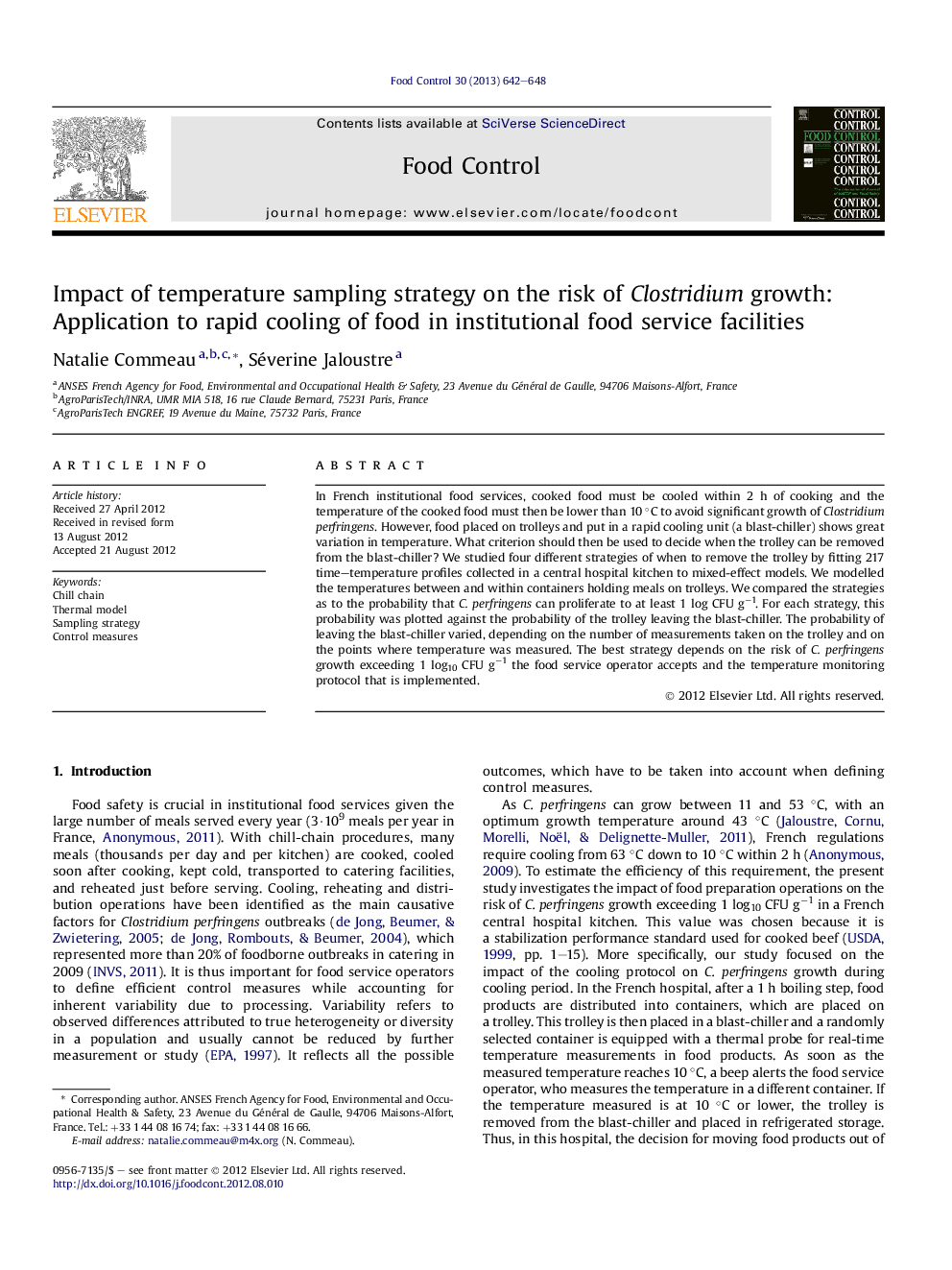| کد مقاله | کد نشریه | سال انتشار | مقاله انگلیسی | نسخه تمام متن |
|---|---|---|---|---|
| 4559481 | 1628426 | 2013 | 7 صفحه PDF | دانلود رایگان |

In French institutional food services, cooked food must be cooled within 2 h of cooking and the temperature of the cooked food must then be lower than 10 °C to avoid significant growth of Clostridium perfringens. However, food placed on trolleys and put in a rapid cooling unit (a blast-chiller) shows great variation in temperature. What criterion should then be used to decide when the trolley can be removed from the blast-chiller? We studied four different strategies of when to remove the trolley by fitting 217 time–temperature profiles collected in a central hospital kitchen to mixed-effect models. We modelled the temperatures between and within containers holding meals on trolleys. We compared the strategies as to the probability that C. perfringens can proliferate to at least 1 log CFU g−1. For each strategy, this probability was plotted against the probability of the trolley leaving the blast-chiller. The probability of leaving the blast-chiller varied, depending on the number of measurements taken on the trolley and on the points where temperature was measured. The best strategy depends on the risk of C. perfringens growth exceeding 1 log10 CFU g−1 the food service operator accepts and the temperature monitoring protocol that is implemented.
► The temperature variability of cooked food in a blast-chiller can be wide.
► We modelled the food temperature inside a blast-chiller.
► Four strategies of when to remove the trolley from the blast-chiller are compared.
► The comparison is made on the probability of Clostridium perfringens growth.
► The best strategy differs according to the risk the manager is ready to take.
Journal: Food Control - Volume 30, Issue 2, April 2013, Pages 642–648